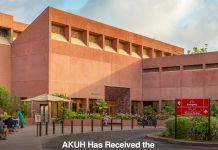Lahore – BASF SE, Germany (“BASF”) has received a recommendation from the World Health Organization (WHO) for Interceptor® G2, a long-lasting insecticide-treated mosquito net (LN) based onchlorfenapyr. Chlorfenapyr is a completely new insecticide class for combating mosquitoes for public health. This is the first WHO recommendation for a product based on a new insecticide class in more than 30 years.
Working with the Innovative Vector Control Consortium (IVCC) and the London School of Hygiene & Tropical Medicine in a collaboration lasting over a decade, BASF’s scientists successfully repurposed chlorfenapyr to be effective on mosquito nets and meet stringent WHO performance thresholds for public health.
Dave Malone, IVCC Technical Manager, said “The collaboration with BASF gave us access to an insecticide with a rare combination of attributes:New to public health, effective against resistant mosquitoes, and able to coat polyester netting with a long-lasting formulation.”
A second chlorfenapyr product, an indoor residual spray named
Sylando® 240SC, is also in the final phases of WHO evaluation.
Around the world, every two minutes a child undergoes a fatality due to malaria
Around the world, every two minutes a child dies from malaria and there are more than 200 million new cases every year, including an estimated 1 million malaria cases in each year Malaria is also a major cause of global poverty and its burden is greatest among the most vulnerable.
Long-lasting insecticide-treated mosquito nets (LN) and indoor residual sprays (IRS) are the cornerstones of malaria prevention, particularly insub-Saharan Africa. But 60 countries have already reported resistance to at least one class of insecticideused in them.Part of the problem is that there were previously only four WHO-recommended insecticide classes for adult mosquito control: Only one of them, the pyrethroid class,was recommended for LNs. Continual use of the sameinsecticidesenabled the highly-adaptable mosquito to develop significant levels of resistance.
Independent trials in Benin, Burkina Faso, Tanzania and Ivory Coast have proven the efficacy of Interceptor G2 and Sylando 240SC against local insecticide-resistant mosquitoes.
Medical entomologist Professor Hilary Ransonfrom the Liverpool School of Tropical Medicine has studied the problem for many years. “We’ve got to take insecticide resistance very seriously,” she said. “In some countries, the local mosquito population has increased its level of resistance 1,000-fold. It has been years since a new class of public health insecticide has appeared on the market. Alternatives are urgently needed.”
Following the WHO recommendation, BASFwill start preparations to launch Interceptor G2 for malariaprevention. Depending on local registration processes, the new mosquito net is expected to be available to health ministries and aid organizations startingtowards the end of this year.
“New resistance management products aredesperately needed to prevent mosquito-borne diseases and save lives,” said Egon Weinmueller, Head of BASF’s public health business.“Thisdevelopment breakthrough strengthens my personal belief that we really can be the generation to end malaria for good.”
About chlorfenapyr
Chlorfenapyr was derived by isolating a toxin from the Streptomyces fumanus actinomycete bacterium. It is new to the public health market, but has been usedin agriculture and urban pest control,including in homes and food handling areas,worldwide since 1995. Chlorfenapyr belongs to thepyrrole class of chemistry and has an entirelydifferent mode of action from current WHO-approved insecticides for public health. It works by disrupting the insect’s ability to produce energy. This makes it unlikely to show cross-resistance in mosquitoes that are resistant to currently registered public health insecticides.Further information is available on publichealth.basf.com.
About BASF
At BASF, we create chemistry for a sustainable future. We combine economic success with environmental protection and social responsibility. The approximately 114,000 employees in the BASF Group work on contributing to the success of our customers in nearly all sectors and almost every country in the world. Our portfolio is organized into five segments: Chemicals, Performance Products, Functional Materials & Solutions, Agricultural Solutions and Oil & Gas. BASF generated sales of about €58 billion in 2016. BASF shares are traded on the stock exchanges in Frankfurt (BAS), London (BFA) and Zurich (BAS). Further information at www.basf.com.






